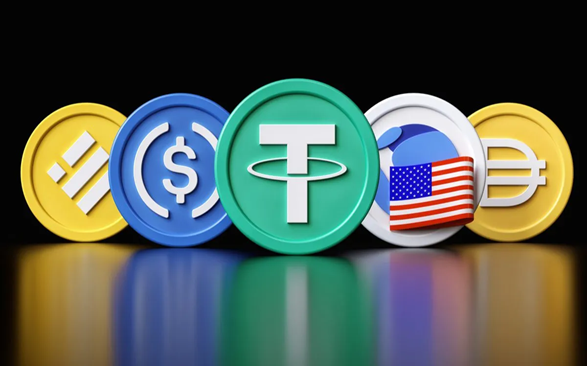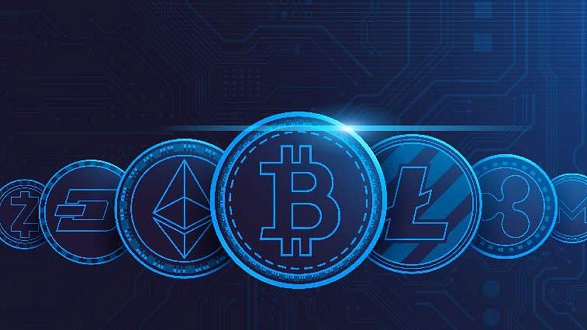The stablecoin market has witnessed unprecedented growth, with US dollar stablecoins reaching a staggering $230.2 billion, adding $1.83 billion towards the end of March 2025. The immediate drive is rising adoption triggered by the fresh regulatory efforts in the U.S., according to DefiLlama data.
This remarkable milestone underscores the dominance of dollar-backed stablecoins, with market leaders Tether (USDT) and Circle (USDC) controlling a significant share of the market.
Dominated by professional flow amounting to 90% of stablecoin adoption, US dollar-backed stablecoins continue to grow globally, with increasing adoption in emerging economies.
Professional Flow Drives Stablecoin Adoption, not Retail–Anthon Golub
Contrary to popular belief, retail payments are not the primary driver of stablecoin adoption.
Instead, professional flow, which includes proprietary trading, market making, and liquidity rebalancing, accounts for over 90% of stablecoin volume. This highlights the critical role of stablecoins in facilitating institutional investment and trading in the cryptocurrency market.
Anthon Golub, an advisor, founding member, and Chairman of SwissAssetDAO, and an Advisor & Venture Partner at Full Stack VC, strongly maintains that retail adoption is not the driver of global stablecoin adoption but professional flow.
“Over 90% of stablecoin volume is professional flow”, Golub pointed out in one of his recent LInkedin posts. Professional flow comprises proprietary traders, market makers, liquidity rebalancing, and cross-exchange arbitrage. “None of that comes from retail payments,” he said
“Retail use [of stablecoin] is a myth”
“Retail use is a MYTH”, maintained Golub.
He believes that the reason Tether dominates the stablecoin market is because it’s fast, profitable, and understands its users.
“Tether earns billions in yield”, he said. “Tether holds $102 billion in U.S. Treasuries. Tether runs [the] most profitable business in crypto.”
Considering Tether’s current business model, Anthony does not see Tether taking steps to comply with MiCA. “And no—Tether will NEVER comply with MiCA. MiCA demands 60% of reserves in fragile EU banks. Tether has 0.06% in bank deposits. It doesn’t need Europe.”
With about $144 billion, Tether’s USDT holds 62.5% of the market followed by $59 billion by Circle.Beyond the crypto market, Tether was the seventh-largest buyer of US Treasuries last year. According to the CEO Paolo Ardoino, Tether purchased a net $33.1 billion in US Treasuries in 2024. This surpasses those of Canada, Germany, Mexico, and some other countries.
Indeed, presently, the retail use of stablecoins is significantly lower than the level of use being witnessed in professional flow. This will likely surge with time, especially if the fast-growing adoption of stablecoins pegged to relatively stable foreign-fiat currencies in developing economies continue to grow. However, this potential growth may be hindered by protectionist regulation in favor of local currencies especially in developing economies in Africa, Central America, Latin America, and South America. This is where stablecoins pegged to local currencies, such as cNGN in Nigeria for example, becomes relevant.
Read also: Stablecoins in the European Market: MiCA, Tether, and Potential impacts on USDT
Navigating Evolving Stablecoin Regulations across the Globe
The rapid growth of the stablecoin market has raised important regulatory questions. The Markets in Crypto-Assets (MiCA) regulation in the European Union demands that stablecoin issuers hold 60% of their reserves in EU banks.
But Tether, the largest stablecoin issuer, has only 0.06% of its reserves in bank deposits, rendering compliance with MiCA unlikely.
“Circle is playing both sides”, Golub asserted. “It created two separate USDCs: One issued from the U.S. One issued from France (to comply with MiCA). That’s two tokens, two jurisdictions, two risks. Same logo, different story.”
Regarding Euro stablecoins, Golub does not see Euro stablecoins gaining any serious level of adoption in the crypto market. Primarily, this is because he believes professional flow will continue to drive stablecoin adoption, not retail.
Besides, the idea of pegging each stablecoin to its fiat equivalent 1:1 by saving each one with a bank is not consistent with Tether’s business model. In Golub’s words, “There’s zero demand for euro stablecoins. No liquidity. No adoption. No trading pairs.”
“And worse—no working infrastructure to scale.”
“Startups keep launching euro stablecoins focused on retail payments. That’s a joke. They’re solving a microscopic problem no one has. Real use case is managing professional liquidity. And I haven’t seen a single new stablecoin startup doing it right. Tether and Circle dominate because they understand this.”
Although it is true that Euro stablecoin market capitalization is significantly low compared to US dollar stablecoin, it is worth nothing that Euro stablecoin market volume has been growing significantly. EURC, for instance, has grown from a market capitalization of about USD55 million to USD149 million within a year, according to data from CoinMarketCap.
Read also: The US Government harnesses stablecoins to bolster Dollar’s global dominance
The Future of Stablecoin Adoption
As the stablecoin market continues to evolve, Golub believes that the next major development is expected to be the introduction of yield-bearing stablecoins. This innovation could potentially disrupt the traditional banking system by offering users a share of the treasury yield. But this development also raises important regulatory questions, as yield-bearing stablecoins may be classified as financial securities.
Clearly, the remarkable growth of the dollar stablecoin market has highlighted the need for proper regulation. As stablecoins continue to play an increasingly important role in the crypto market, regulators need to strike some level of balance between promoting innovation and ensuring market integrity, transparency, and efficiency. One imagines that the introduction of yield-bearing stablecoins will only add to the complexity of this challenge.
Read also: Tether (USDT) Stablecoin: Use Cases and Pros and Cons You Should Know
Discover more from Crypto Asset Buyer
Subscribe to get the latest posts sent to your email.




